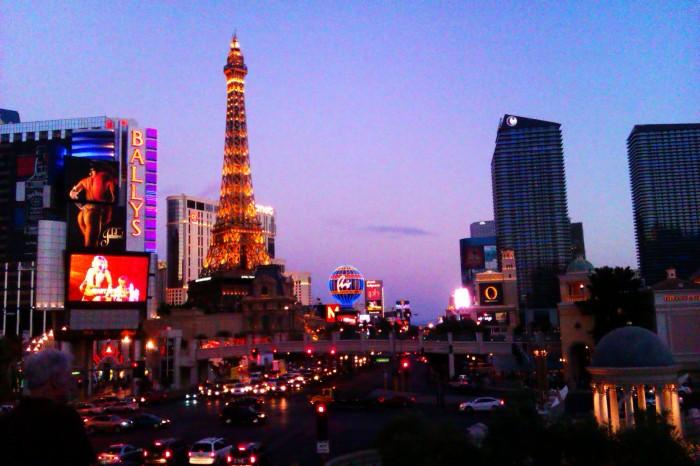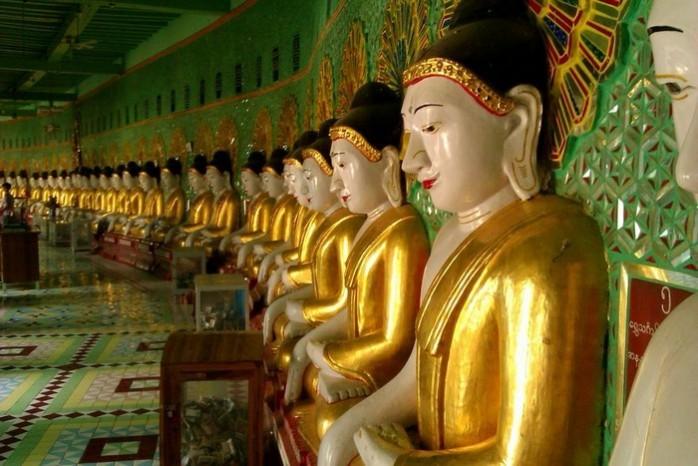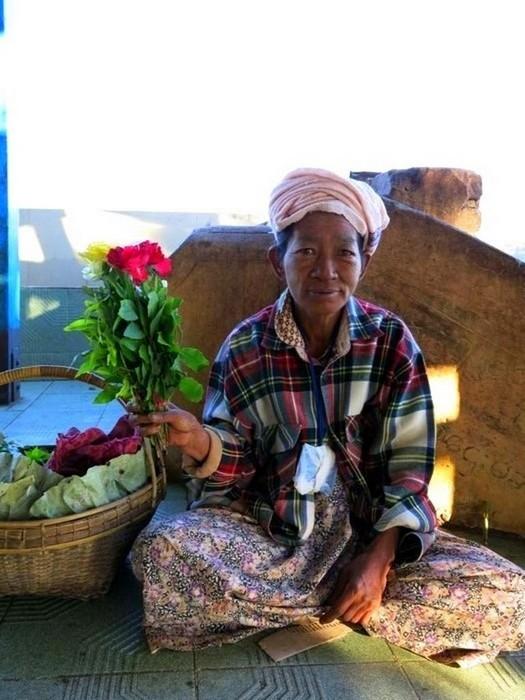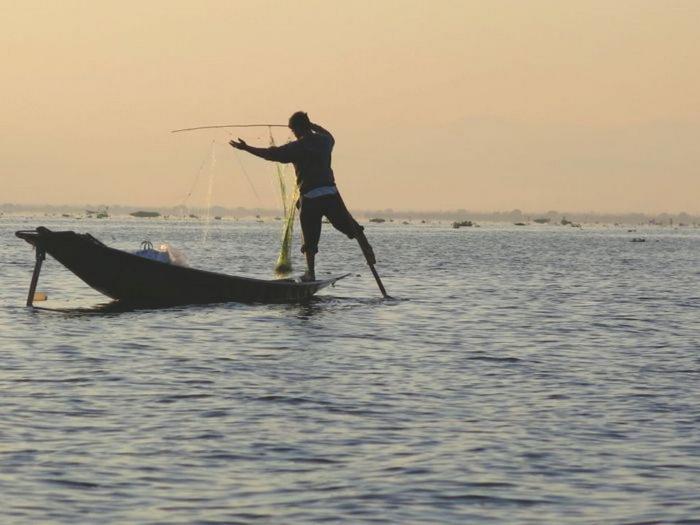“I don’t speak Hindi”, my guide at the Sri Ranga temple announced – with more than a slight sense of pride. Yes I’m in Tamil Nadu, in the deep south of India, where Tamil has been the language for nearly 4,000 years. Little wonder they feel the Taj Mahal is a very recent usurper of the image of India! Not only is the language different, there is barely a trace of any faith but Hinduism, and that is the very fundamental form where temple elephants dispense blessings, where the gods and demi-gods are too numerous to remember, and where they exhibit very real human characteristics. And in many ways they are treated like humans and given a walk around the local streets on important festival days, along with the temple elephant, the temple horse (horses and camels are not common in South India, so the presence of one indicates wealth and rank for the temple), and a bevy of Brahmins in loin cloths with the sacred chord across their chests.
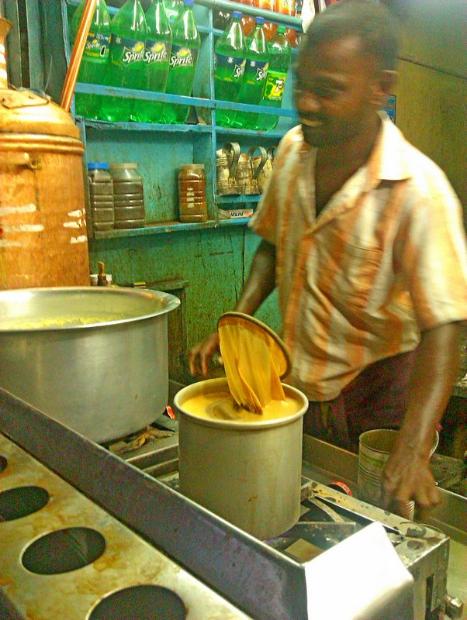
After this procession, where BTW there was but one other solitary tourist, I decided to have some chai. Chai owes its origins to tea, but is not the genteel warming the pot experience the British grew to love. Not at all. Here it’s all big pots and theatre. Take a tea strainer that looks like a very large sock on a stick, top up with powdery tea and dunk into a pot of water until it boils over. Add sweetened milk from a huge saucepan which is constantly on the boil, and – here is the theatre – pour from an arms length away back and forth into a glass cup. The end result is a very frothy, sweet, and faintly tea flavoured drink. The Indians love it. I was busy trying to guess how much I should offer. I was not expecting to be asked for just 6 Rupees (12 cents), and to be soundly rebuked for offering the change from a 10 Rupee note as a tip. Tipping is not approved of – this isn’t New York!
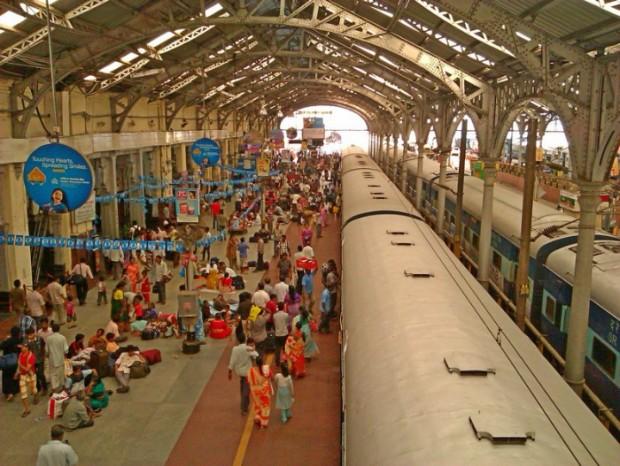
A trip on Indian Railways is always going to be an experience. Arriving at Chennai Egmore station at 7:30 in the morning, I’m met with a noisy crush of humanity. The Konyakumari overnight express from the southern tip of India has just arrived. I pick my way over supine humans and try to avoid the porters with suitcases balanced on their heads and duck into the Vegetarian Meal Room. As usual it’s a chit system where you pay at a desk and present a ticket to the cooks. My first masala dosa in India tasted good, as did the milky sweet coffee, though I have to say I have never mastered the art of eating with fingers of the right hand, nor the way Indians can pour liquid from a cup or bottle right into their mouths without touching the rim with their lips. I always end up looking a bit challenged with liquid dribbling out of both sides of my mouth. It causes a bit of amusement.
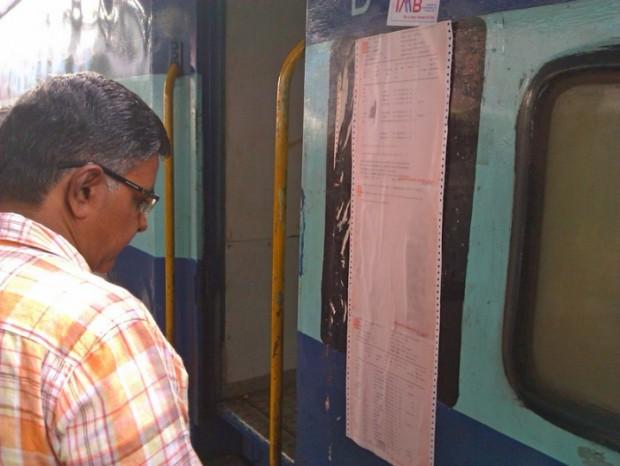
Then I have to find the train – and my carriage. Indian Railways is one of the largest employers in the world with 1.4 million on the payroll, and I swear there must be a whole department dedicated to bureaucracy. Even locals are having trouble finding the right carriage. With bizarre logic, they are numbered with an initial letter based on the class. So there is S for sleeper, C for coach seating, B for second class sleeper, etc. All followed by a number. Logic then fails when you realise the carriages are not marshalled in order. So S might be followed by B and only then by C. Much fun, though I realised that scoping out the carriages with solid glass windows rather than bars would indicate aircon and therefore second class and up. Then you have to look at the dot-matrix concertina printout glued to the side of your carriage to determine your seat. Privacy regulations haven’t reached India, so the printout lists your full name, sex, age, and ID type for all to see…
Indians are friendly chatty folk and you are bound to be engaged in conversation. Although English is basically the second language of India, it can be very hard to understand. If you think the average call centre worker has a tough accent, remember they have been trained to speak our version of English. The average Indian uses grammar you won’t have heard in decades with an accent that makes it all the more difficult. I was asked – “and your native land is?”. When I figured what was literally being said, I figured what he meant – “where do you come from?”. But to be fair, the British mangled plenty of Indian words and places. I’m currently in Trichy – so called because the British couldn’t get their lips around Tiruchirapali, Anglicised it to Trichinopoly, and then shortened it to Trichy – which is how most Indians refer to it now.
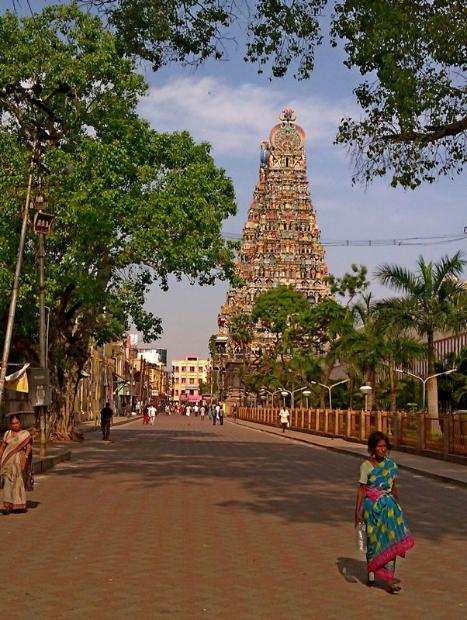
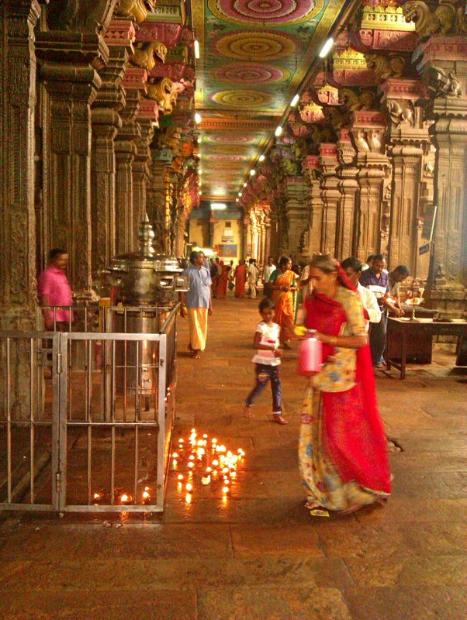
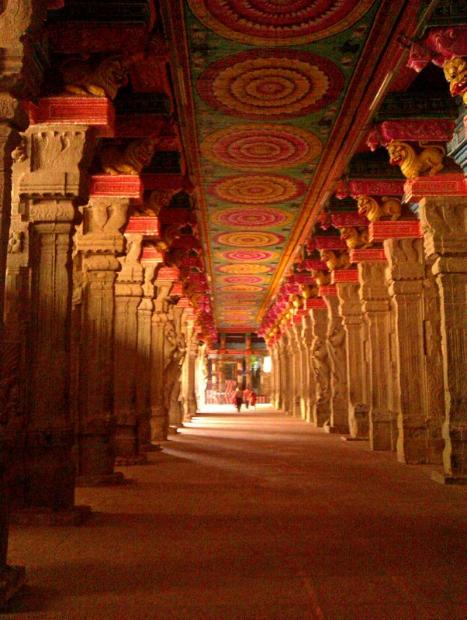
So how to describe a visit to a South Indian temple. It really is sensory overload. Firstly, however popular for tourists, you are going to be in a real minority. An the majority – or at least the female half – will be dressed in their best, most colourful saris. The humanity is a riot of colour. And there is a lot of humanity, making for shrines, trying to meet worshipping deadlines, getting to the front of lines, or simply sitting around chatting. It is religion at its most basic. If you add that although there will be one major shrine, there will be hundreds of subsidiary statues and smaller shrines demanding devotion. And that devotion takes a very hands on form with sesame oil candles being placed at the feet of statues, garlands of jasmine being hung around the neck of the gods and goddesses, coloured powder being applied, ash being poured in mounds over the head of some, or smeared on others and then applied to the forehead of the worshipper. There aren’t really all that many players in the Hindu pantheon. The problem for those not raised into this family, is that they all seem to have multiple incarnations, or more often, multiple personas. And beyond that, even the way they swing their trunk (in the case of Ganesh) may make him a benign promoter of good fortune, or a remover of all obstacles whether or not his actions are going to help you…
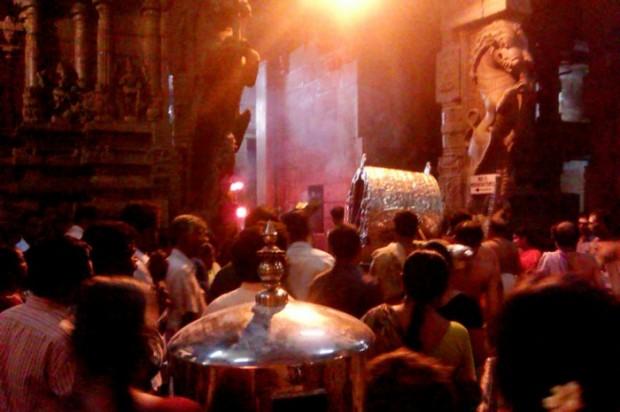
In many ways the most attractive aspect is that the gods are in many ways very mortal. They have rivalries, jealousies, and desires. And so at the Meenakshi Temple, every night there is a ceremony where the statue of Lord Shiva is taken in a silver palanquin with much blowing of horns and banging of drums, and incense, to the sanctum of his wife. He waits outside for a respectable period for her to ask him in, and then he proceeds to spend the night with her in statue form. That’s a great deal easier to relate to than the Holy Trinity!
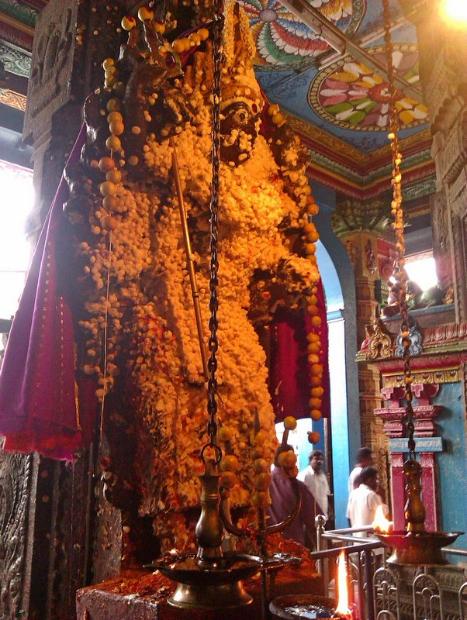
The central shrines are almost always off limits to non-Hindus. Personally I suspect this is a way for the priestly Brahmin caste to keep control by classing non-believers below even the Hindu Untouchable caste. But as you progress beyond their influence to the Sri Subramanya Swamy Temple some 6kms outside Madurai, where the main deity is the second son of Shiva (and also the god of war), you are far enough down the holy pecking order that the temple is controlled by non-Brahmins. So unlike the Meenakshi Temple, the Sri Subramanya does not limit access to the holy of holies to Hindus only. Snaking for 30 minutes up stairs and around corners in a huge crush of devotees and oppressive heat, cooled (slightly) by the occasional ceiling fan, is a fitting prelude to the statues in the shrine carved into the cave rock 1,000 years ago. All is dark and atmospheric. The oil lamps adding scent and a flickering glow, and unlike in Madurai, butter balls being thrown at a statue by the entrance to cool and sooth the god. The offerings of flowers, coconut, and money all gratefully accepted and presented at the shrine by the priests. Then a local priest willingly grants a blessing to every person in turn – even to a non believer – and somehow the amazing devotional nature of Hinduism is made real.
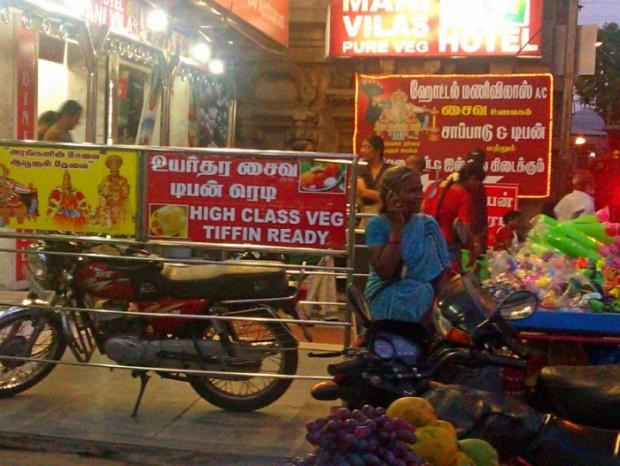
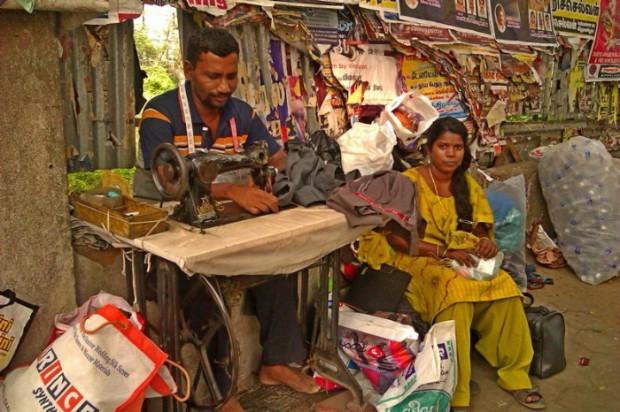
Walking around the streets, it feels like India is an entire nation of shopkeepers. Little shopfronts everywhere and no giant outlets. Even the few shopping malls are a rabbit warren of small corridors and tiny stores. No chance for the big guys, though Walmart with an eye to the 1 billion person big prize has now extracted permission to trade in some states, but by no means everywhere. And, as yet another throwback, I hear the good old Nokia ringtone everywhere. The Indian local retail lobby is huge and strong.
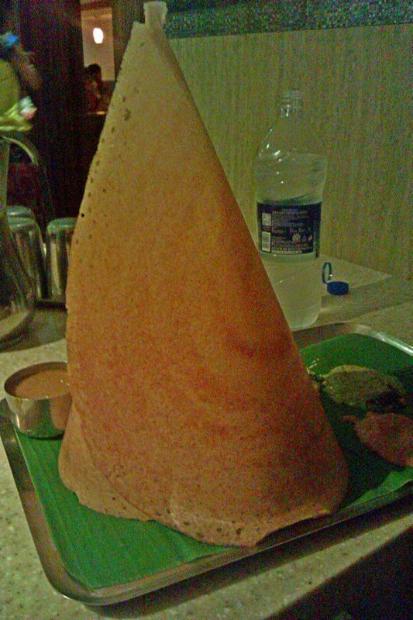
The restaurants in the south are 90% solely vegetarian. One of the great items is the dosa – a rice flour pancake cooked until crisp on the outside and thus able to be turned into a huge cone, or a long cylinder. Like most things here, it comes with a fiery coconut sambal and some vegetable curry. If you get the chance to try Chettinad food, you may well encounter meat, but also the hottest spices. If someone in South India tells you the food is spicy, beware because it will be tongue-numbingly hot.
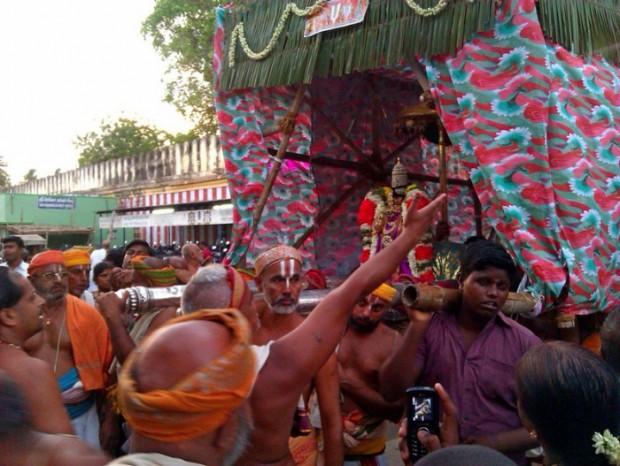
I remember visiting South India and China back in the 70’s. Since then China has changed beyond all recognition, while India remains very much the same. And because of that, charmingly and utterly a travel experience not to be missed…
[geo_mashup_map height=”400″ width=”620″ zoom=”6″]
[otw_is sidebar=otw-sidebar-2]
